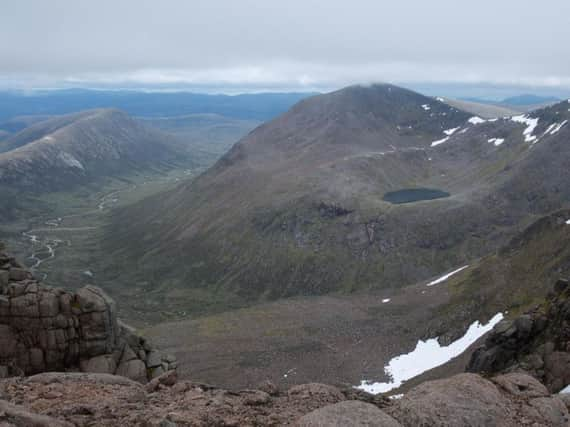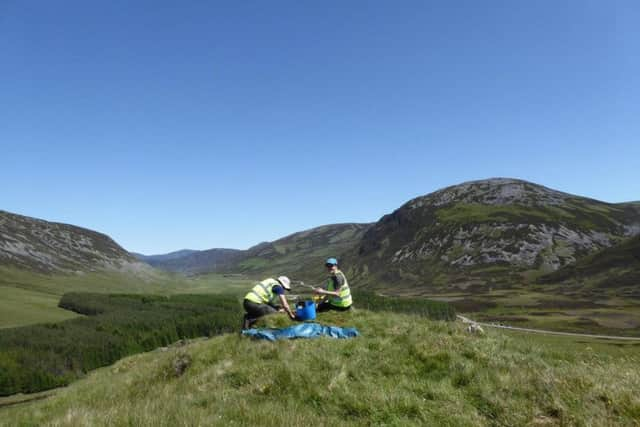In search of Scotland's ancient mountain dwellers who lived more than 10,000 years ago


Now, the search for more details about these Mesolithic inhabitants of some of Scotland's most stunning mountain terrain has been revived with miles of ground covered by archaeologists looking to trace the lives of our ancient ancestors.
Professor Graeme Warren, Head of UCD School of Archaeology at University College Dublin, returned to the Cairngorms earlier this month to build on finds made between 2013 and 2015 when over 130 pieces worked flint, likely used for shooting and preparing plant and animals, were recovered from Caochanan Ruadha in remote Glen Geldie.


Advertisement
Hide AdAdvertisement
Hide AdIn Glen Geldie a pit filled with charcoal and burnt stone was also found with it believed a temporary dwelling - perhaps a type of tent - may have been close by.
Professor Warren and his team were able to establish there was a human presence in the area around 8,100 BC.
The mountain dwellers could also be found in Cairngorms during a time of dramatic climate change when temperatures fell by one to three degrees Celsius.
Professor Warren said: "We know from the work that we did in 2013 that there were hunter gatherers here in the Cairngorms. Some of the sites were in use over a 4,000 year period. The challenge is trying to find them.
"These landscapes are resource rich, so they have good fishing available with the salmon on the Dee and there may have been large mammals to hunt.
"The mountains are natural routes of communication. You have the River Dee running through the Lairig Ghru and the Geldie Burn is a very significant east to west route. People were moving around using these routes
"We can also think about what type of aesthetic or emotional reaction these hunter gatherers had to the landscape.
"In many hunter gatherer cultures, mountains were considered to be very special features
Advertisement
Hide AdAdvertisement
Hide Ad"One of the sites is close to a waterfall where salmon come to rest. It would be a logical place to have a site.
"Waterfalls also had a great spiritual significance and hunter gatherers believed it is where the different tiers of the world met."
Previous research has show that mountain terrain was increasingly used by Mesolithic people, particularly in Alpine areas.
Professor Warren said the sites were "hard to find" in the vast mountainous landscape with the flint fragments found earlier in the Cairngorms sometimes measuring around 8 to 9 millimetres.
Following the success of the earlier research, which brought together teams from UCD, Stirling University, Aberdeen University and National Trust for Scotland, investigations in the Cairngorms have moved to the next stage.
Miles of ground were recently covered in previously unexplored valleys to identify possible new sites in a landscape which has shifted and altered through time.
Reports of a new flint discovery by a member of the public led Professor Warren and his colleagues into Glen Clunie where two more flints were found although further evidence of settlement remained out of reach.
"We simply could not find a concentration of artefacts. That can happen with these sites. Similarly, the people who were here might not have used many stone tools," Professor Warren said,
Advertisement
Hide AdAdvertisement
Hide AdFurther research of a site identified in 2015 was hampered given a peregrine falcon was nesting close by, with the bird protected by an exclusion zone.
He said members of the public could play a crucial role in piecing together hunter gatherer life in the Cairngorms.
"The question is how you find the sites. If people are out walking in these landscapes, if they see stuff we really want them to report it to the National Museum of Scotland. It gives us a chance to follow up on what might be there."
Professor Warren's work this year has been funded by the Society of Antiquaries of Scotland, Aberdeenshire Council and the UCD School of Archaeology.
He is due to return to the Cairngorms next summer to investigate further.
